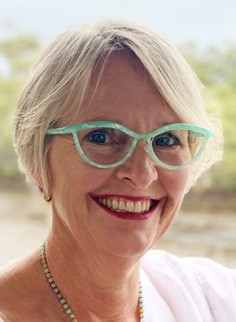THE OPHTHALMIC JOURNAL

Australia has a diverse population with around 30% of people born overseas. According to the Australian Bureau of Statistics, back in 2021, just over seven million of our population, which stood at 25.69 million, were born overseas, an increase from 6.1 million, or 26.3%, in 2016.1
Whereas migrants to Australia in the first half of the 20th century were primarily from England, Ireland, and Scotland, today it’s a very different story. From 2016–17, the top five countries of birth were England, India, China, New Zealand, and the Philippines, However the top increases in country of birth were India, Nepal, Philippines, China, and Vietnam.1 We are a constantly evolving nation.
And according to a Lowy Poll taken in 2024, Australians are “overwhelmingly positive about Australia’s cultural diversity”. Nine out of 10 of us think Australia’s culturally diverse population has been either ‘mostly positive’ (69%) or ‘entirely positive’ (21%) for the country.2
However, embracing our culturally diversity is just one aspect of making people feel welcome in our country and creating vibrant, inclusive communities. We also need to ensure the health, education, and wellbeing of our migrant populations.
Language barriers, lower health literacy, and difficulties navigating an unfamiliar system create considerable challenges for some people from culturally and linguistically diverse (CALD) backgrounds. This puts them at greater risk of poorer quality health care, service delivery, and poorer health outcomes compared with other Australians.
In this issue of mivision, we take a look at some of the ways health care providers can better equip their practices to deliver services to our CALD populations. Helene Ly from Centre for Eye Health Australia reflects on her own background as the child of Vietnamese refugee parents, as well as her experience as a clinical optometrist, to advise on how we can better service patients from CALD communities. From a human resources perspective, Kasia Groves provides tips on building culturally diverse teams or at least equipping your teams with knowledge, language skills, and resources.
Elsewhere in the issue we have a diverse collection of articles to keep you engaged, ranging from one of the most significant developments in glaucoma management developed right here in Australia, through to eyewear born from NASA technology, and some practical tips on financing your own home.
Enjoy.
MELANIE KELL EDITOR
References available at mivision.com.au
In the spirit of reconciliation, mivision acknowledges the Traditional Custodians of country throughout Australia and their connections to land, sea, and community. We pay our respect to their Elders past and present and extend that respect to all Aboriginal and Torres Strait Islander peoples today. As a bi-national publication, we acknowledge Māori as tangata whenua and Treaty of Waitangi partners in Aotearoa New Zealand.
MELANIE KELL EDITOR
In the spirit of reconciliation, mivision acknowledges the Traditional Custodians of country throughout Australia and their connections to land, sea, and community. We pay our respect to their Elders past and present and extend that respect to all Aboriginal and Torres Strait Islander peoples today. As a bi-national publication, we acknowledge Māori as tangata whenua and Treaty of Waitangi partners in Aotearoa New Zealand.